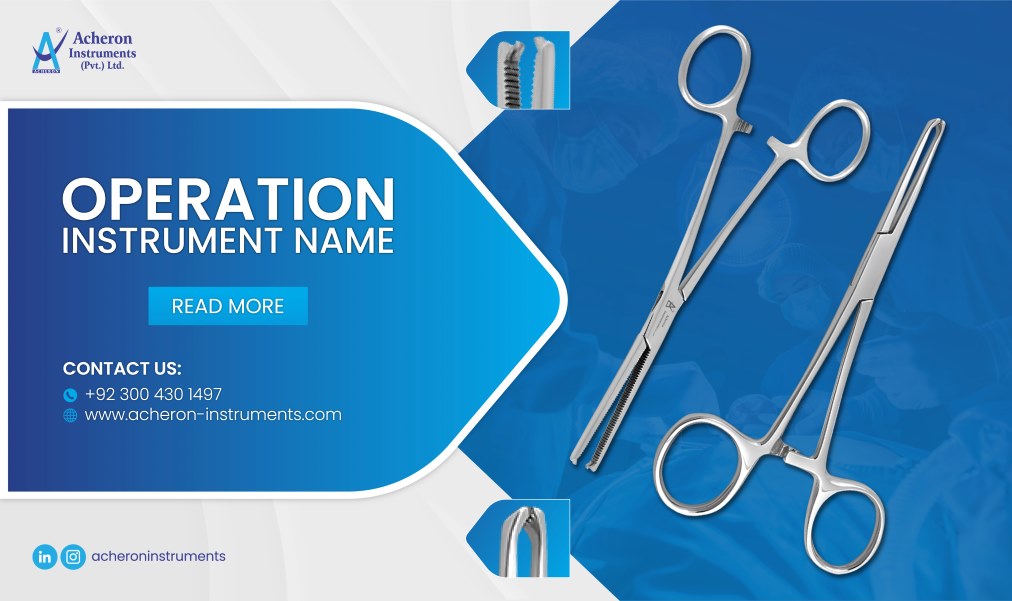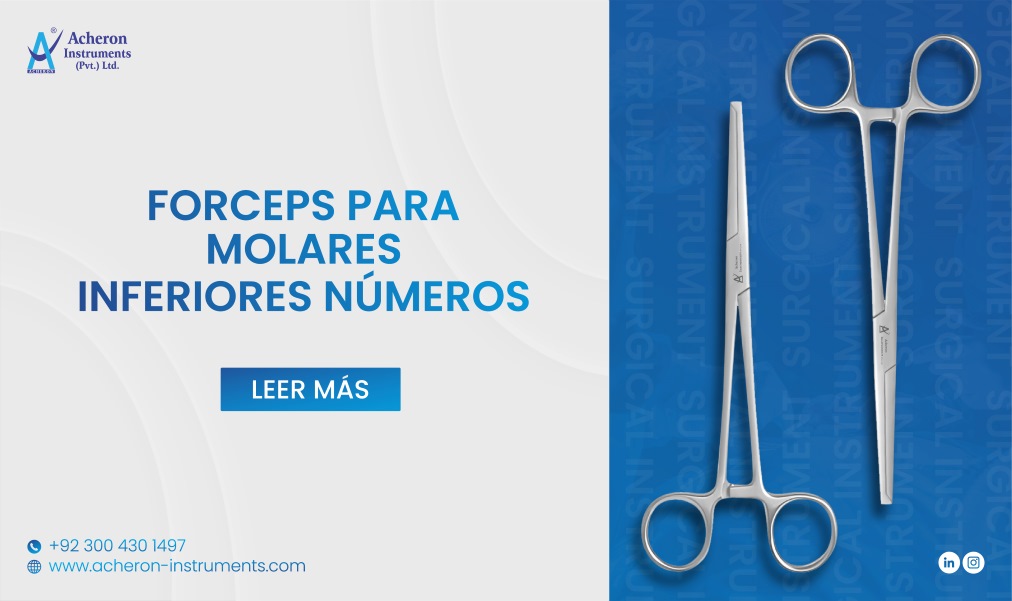 A cervical biopsy tool is an intricate procedure that doctors recommend when they doubt something abnormal after a pelvic examination or pap smear tests. This procedure involves removing a piece of tissue to either eliminate or validate the possibility of cancer. Doctors make use of essential cervical biopsy tools for this procedure as it requires precision, skill, and the use of specialized surgical instruments.
A cervical biopsy tool is an intricate procedure that doctors recommend when they doubt something abnormal after a pelvic examination or pap smear tests. This procedure involves removing a piece of tissue to either eliminate or validate the possibility of cancer. Doctors make use of essential cervical biopsy tools for this procedure as it requires precision, skill, and the use of specialized surgical instruments.
It's important to note that undergoing this procedure does not automatically imply the presence of cervical cancer. In this blog, we'll be discussing surgical instruments used for cervical biopsy, shedding light on their functions and significance in the diagnostic process. But first, let’s discuss a bit more about cervical biopsy for a better understanding.
Understanding cervical biopsy
Cervical cancer is one of the most widespread cancers worldwide that needs to be addressed and treated as soon as possible. A cervical biopsy is a surgical procedure where surgeons take a small piece of tissue that is extracted from the cervix area for cervical cancer screening. The cervix is a lower and narrow portion of the uterus situated at the end of the vagina.
Do you know that over 900 individuals received cervical cancer diagnoses in 2023, with an average age of 50.
Doctors usually recommend a cervical cancer biopsy procedure when they find an abnormality during a pap smear or routine checkup of the patient. Such abnormalities can be precancerous cells or human papillomavirus (HPV).
However, this procedure is not only limited to diagnosing the cancerous cells in the cervical area. Doctors or gynaecologists also perform this procedure to treat or diagnose some particular conditions such as polyps or genital warts etc.
You are a gynecologist, Looking for the best surgical instruments? Try Acheron Instruments Surgical tools, Each year, our cutting-edge instruments grace over 7 countries, a testament to our commitment to global healthcare innovation.
Are there different types of biopsies?
There are generally three methods for performing cervical biopsy. Doctors will recommend the one based on the patient’s medical history and the reason for the biopsy.
Cone biopsy: doctors use general anesthesia for this method. It involves the use of a scalpel or laser to remove cone-shaped large pieces of tissues from the cervix.
Colposcopy biopsy: also known as punch biopsy, this method involves extracting tiny tissue fragments from the cervix using a tool known as "biopsy forceps." To enhance visibility and facilitate the identification of abnormalities, your doctor may apply a dye to stain the cervix.
Endocervical curettage (ECC): In this method. the cells are extracted from the endocervical canal, situated between the uterus and vagina. This is achieved using a handheld tool known as a "curette," featuring a tip designed in the shape of a small scoop or hook.
Cervical biopsy tool used during cervical biopsy
Surgical instruments play a crucial role in examining and extracting the tissues following the biopsy procedure. These tools not only make sure that the procedures go smoothly by comforting the surgeons but also enhance the efficiency of surgical procedures. Let’s have a look at the commonly used tools during this procedure:
Speculum:
The speculum is an essential tool for examinations during gynecological procedures, including cervical biopsies. It is designed to open the vaginal walls gently, providing a clear and better view of the cervix. Moreover, the two most common types are the Graves speculum and the Pederson speculum.
Cervical Brush or Swab:
Before the biopsy procedure, surgeons use a cervical brush or swab to collect cells from the cervix for cytology examination (Pap smear). This step is important as it helps identify abnormal cells and guide the location of the biopsy.
Tenaculum:
A tenaculum is a grasping tool that aids in stabilizing the cervix during the biopsy procedure. Moreover, by securely holding the cervix in place, the tenaculum minimizes movement making it easier for the healthcare provider to get a precise sample for biopsy.
Cervical Biopsy Forceps:
These cervical biopsy forceps also referred to as biopsy punch forceps come in various shapes and sizes, allowing healthcare professionals to select the most appropriate tool for the specific biopsy technique.
This cervical biopsy punch is used to grasp and remove a small tissue sample from the cervix for further examination. Additionally, their distinctive design makes them well-suited for various sampling processes. They feature multiple variations to accommodate healthcare providers in a diverse range of medical procedures.
Available in numerous configurations, these include forceps with specifications like 2.2X7mm Bite, 8 1/2" Shaft, 3X5mm Bite, 3X7mm Bite, 3.5x8mm, 9 1/2", and 3x7 mm Bite, 8 1/4" Shaft. Furthermore, the ratcheted single finger-ring mechanism, coupled with an alligator-shaped design, facilitates convenient access to the surgical site and provides a better visualization.
Endocervical Curette:
In cases where the biopsy needs to access the endocervical canal, an endocervical curette is of great importance. This instrument also referred to as the endocervical brush is designed to scrape and collect tissue samples from the inner lining of the cervix.
Surgical scalpel
For a cone biopsy procedure, surgeons either use a loop electrosurgical excision procedure (LEEP) or the cold knife cone biopsy method. The cold knife cone biopsy involves the use of a laser or surgical scalpel to extract tissue and requires either regional or general anesthesia.
Colposcope:
While not a direct surgical instrument, the colposcope is an integral part of the cervical biopsy process. This magnifying device allows healthcare providers to visualize the cervix more closely. Also, it aids in the identification of abnormal areas for targeted biopsy.
Cautery or Hemostatic Forceps:
In the event of bleeding during or after the biopsy, cautery or hemostatic forceps are used to control and stop the bleeding. Moreover, these surgical tools ensure the patient's safety and comfort during the procedure.
Wrap up
The accurate diagnosis of cervical abnormalities relies heavily on the careful use of specialized surgical tools during the biopsies. Each cervical biopsy tool plays a unique role in ensuring the procedure's success. From the initial visualization of the cervix to the collection of tissue samples precisely.
As technology advances, new surgical tools may emerge, enhancing the accuracy and efficiency of cervical biopsies. However, the fundamental principles of careful tissue collection and patient well-being will continue to guide healthcare practitioners in this critical diagnostic journey.
Looking for the best cervical biopsy tool?
If you are in search of a high-quality cervical biopsy tool for your clinic/healthcare facility, you’ve reached the right place. Step into a world of precision and excellence with our incredible and extensive range of cervical biopsy instruments at Acheron Instruments. We have a wide range of cervical biopsy forceps, curettes, speculums, and whatnot! You’ve got it all under one roof!
Also, We offer surgical instruments made from high-grade German stainless steel material designed to enhance your skills and streamline your procedures.
Make the smart choice today and elevate your medical practice with our extensive range of surgical instruments. Your patients deserve the best, and so do you.
Contact us at the number given on our website for further assistance.








